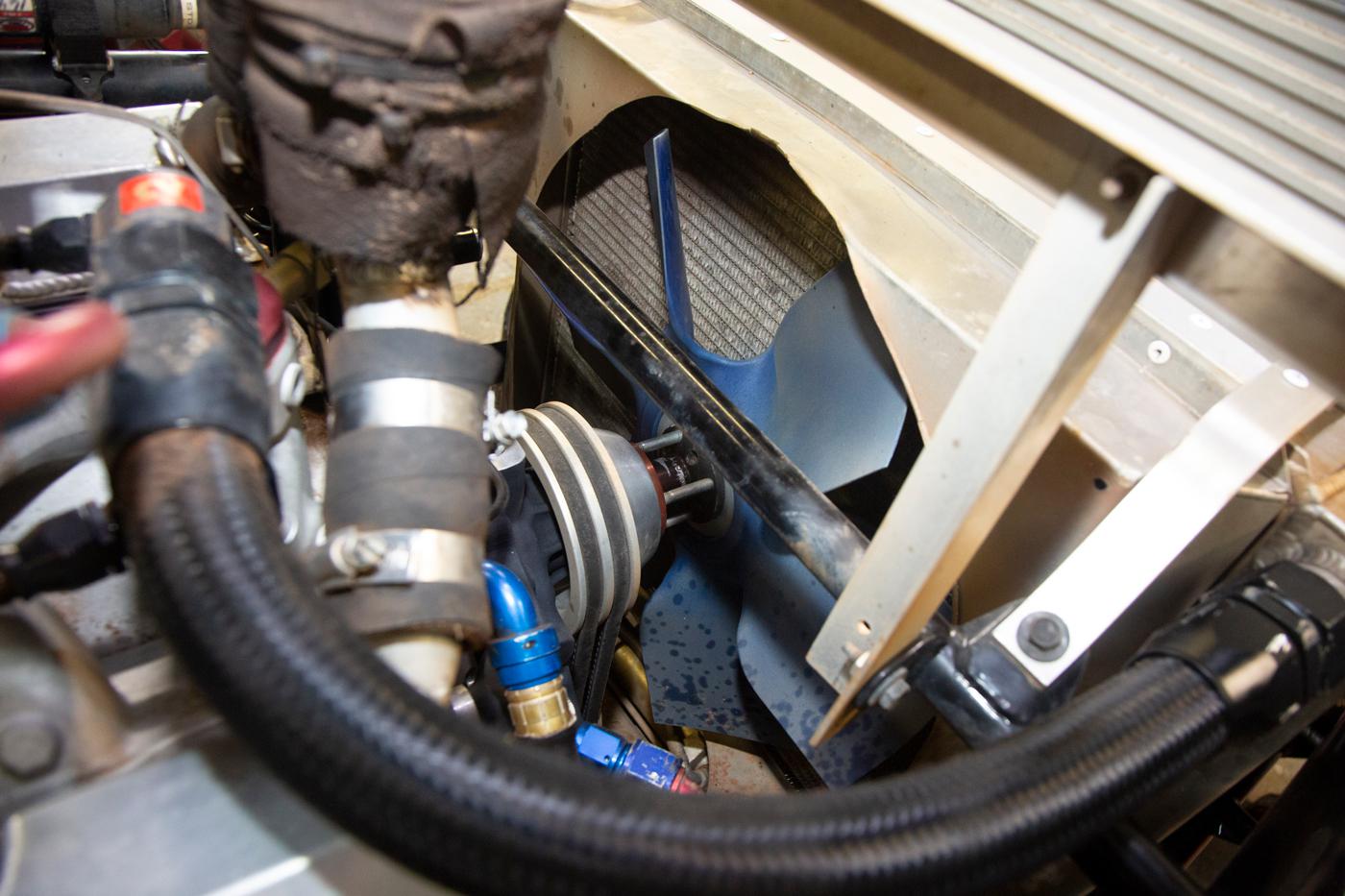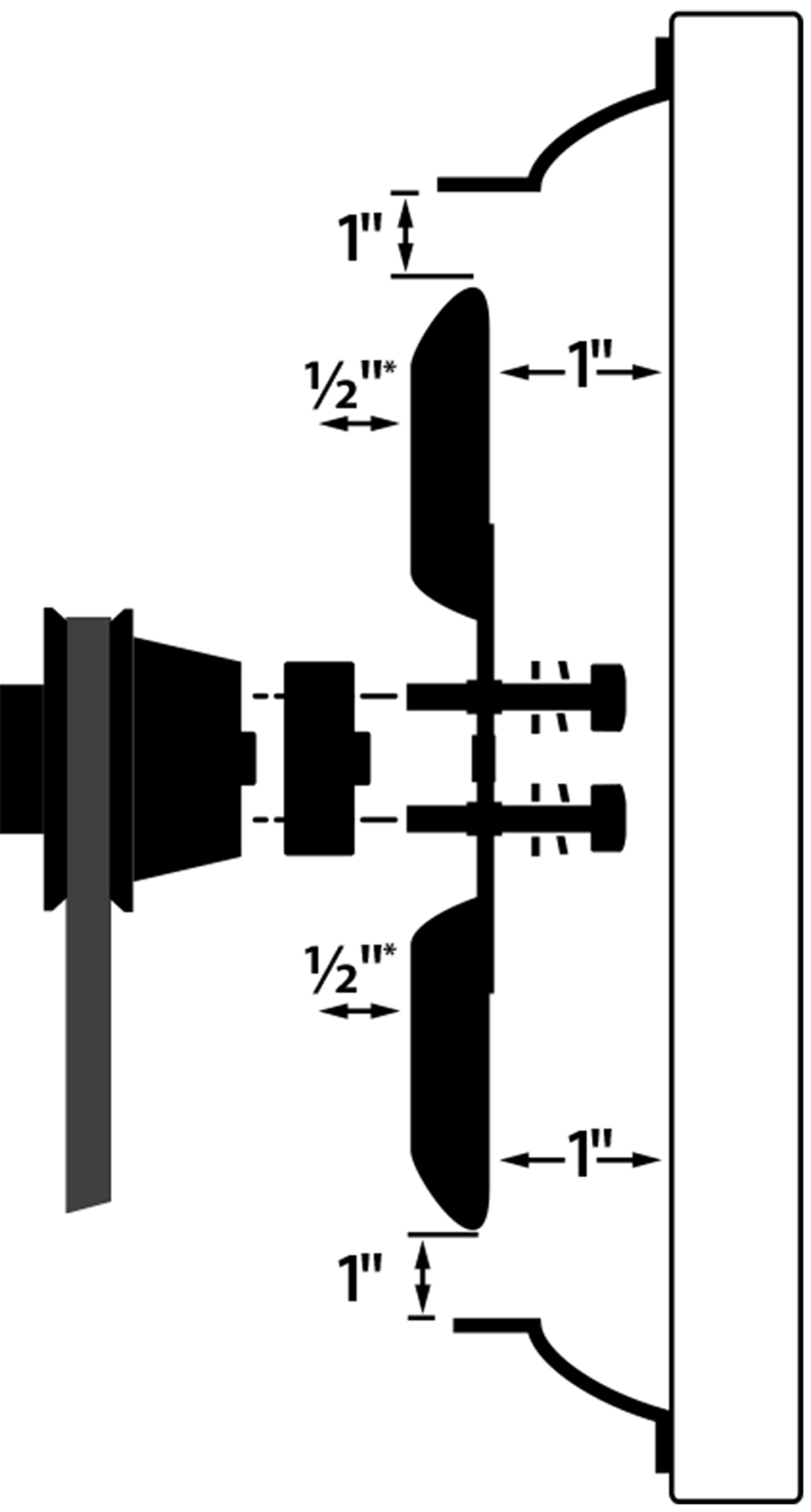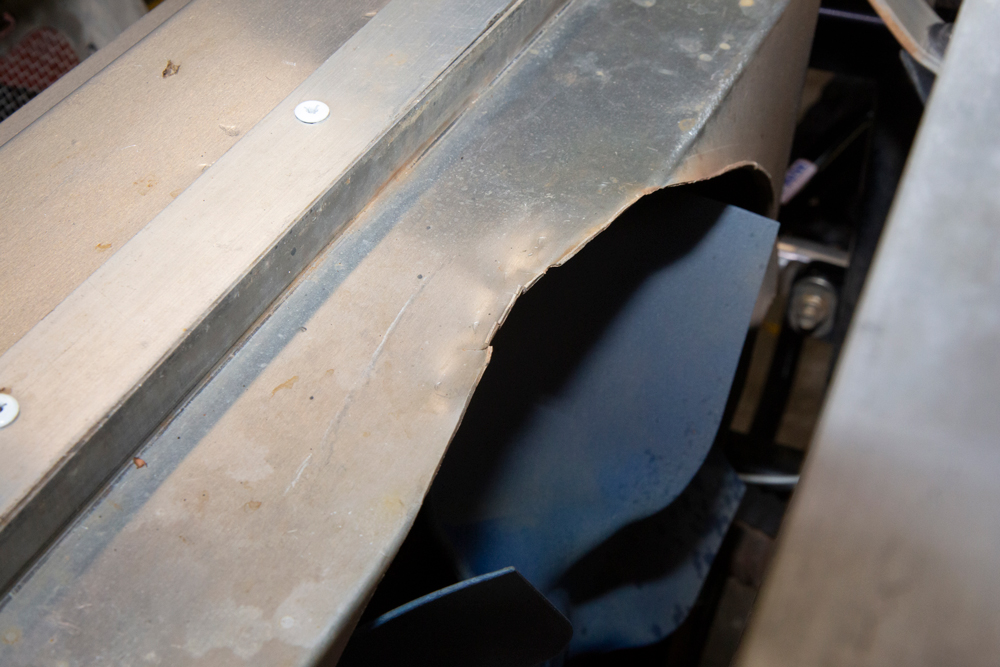PRI Tech

Proper placement of an engine-driven cooling fan on a race car is crucial for maximum cooling efficiency and avoiding cooling problems.
You can have the best belt-driven radiator fan in the world that moves a high volume of air, but if it’s not properly positioned inside the fan shroud, you’re not getting the best engine cooling. It’s like running with only seven out of eight spark plugs installed in an engine. And if you’re running a belt-driven fan without any shroud, that’s like only installing half the spark plugs in your engine.
A fan shroud is actually the other half of the fan system for those who rely on a belt-driven fan for engine cooling. The shroud forces the air to be pulled through the radiator instead of around it. And correct placement of the fan blades in the shroud is important for proper airflow.

When looking at the fan from the side of the race car, if the fan blades are completely inside or outside of the shroud, then the fan will simply move air around, not effectively pull it through the radiator. If the fan is too far inside the shroud, it creates turbulence inside the shroud that causes air to start spinning around in the shroud instead of moving through it. This condition will persist until vehicle speed increases enough that the ram air overcomes the turbulence, but the race car will still not get the maximum airflow and engine cooling that it could.
For circle track racers, during parade/caution laps there is still some vehicle movement to help with airflow across the radiator, but the reduction in fan efficiency can cause the motor to start building heat. If full speed racing doesn’t resume fast enough, the build-up of heat increases the risk of engine detonation, which could lead to engine failure, and/or it increases the risk of vapor locking with the fuel system and carburetor. It can also cause issues with any fluid coolers mounted in front of the radiator that are also dependent on the radiator fan for air movement to dissipate heat. From engine-oil cooling to transmission-fluid cooling, lack of proper fluid cooling can lead to failure of components.
For drag racers, the only time there is any ram air effect to assist with cooling is during an actual pass and during the shutdown run after the lights. When driving back to the pits, a car isn’t moving fast enough for any ram air benefits. In turn, this means more time is necessary in the pits for cooldown, even when using auxiliary fans to assist with cooldown. This becomes critical if the time between rounds is reduced for whatever reason. If the engine is building too much heat before the next run, conditions exist for issues similar to circle track cars with increased risk of engine-harming detonation or vapor lock that will reduce performance.
Regardless of the type of racing you do, if an overheating situation happens, you can end up with a failed head gasket, damage to engine components, or a blown engine.
Correct Placement
What’s the correct basic positioning of an engine-driven radiator fan inside a fan shroud? The optimal location is to have the fan halfway inside the shroud. Besides the lateral positioning of the fan, pay attention to the longitudinal positioning. If the fan isn’t centered properly inside the shroud, it causes dissimilar resistance along the length of the fan blades. This means that air will be moving at different velocities across the span of the blade, creating stress that leads to failure of the fan blade(s).

Another factor relating to the shroud is the spacing between the outer diameter of the fan and the inner diameter of the fan shroud. If there is too much space between the fan outer diameter and the shroud inner diameter, efficiency will be reduced because the fan will be pulling some air from outside the shroud instead of through the shroud. Second, there must be enough clearance to account for engine and chassis movement during hard acceleration and cornering. If the fan blades make contact with the shroud, damage can occur.
If you’ve looked at your radiator fan position in relation to how far it goes into the shroud and noticed it’s wrong, what do you do? If the fan is too far inside the shroud without any spacers installed, you’ll need a different shroud that isn’t as deep, or trim the existing shroud if possible. If you’re using a fan spacer, then use a shorter one (more on that later).
If the fan is too far back from the shroud, which is the most common problem, it’s time to install a spacer to position the fan correctly. Fan spacers are available in a variety of lengths, generally from a half-inch thick up to 3 inches. Some companies, such as Flex-A-Lite, say that up to three spacers can be stacked together if needed. If you stack spacers, make sure that all of them are the same brand and that they fit together perfectly. Any discrepancy can cause the fan to not be parallel to the water pump flange or have a wobble that can loosen the fan bolts as the engine runs.

One important thing to know is not all fan spacers are created equal. A lower-cost fan spacer might look like a bargain, but it can cost you way more later on. Sharp edges on budget spacers can work-harden the center star of a belt-driven fan, damaging the fan where it won’t center properly and possibly fail prematurely and catastrophically. To prevent this, companies like Flex-A-Lite chamfer the edges of its fan spacers so they won’t cause this wear problem. In fact, Flex-A-Lite will void the warranty on its engine-driven fans if they’ve been used with a spacer from another brand.
Proper placement of a belt-driven fan in a fan shroud is relatively simple to achieve, and it’s critical to proper cooling for racers.
Patrick Hill grew up in the performance industry and has decades of experience working on street vehicles and race cars. As a former editor of Super Chevy Magazine, Hill now writes for several publications and manages Flex-A-Lite’s social media accounts and various marketing projects. For more than 60 years, Flex-A-Lite has specialized in performance cooling products designed to increase vehicle performance including electric fans, fully shrouded primary fans, belt-driven fans, and the original Flex Fan.
 MEMBERSHIP LOGIN
MEMBERSHIP LOGIN JOIN PRI
JOIN PRI


